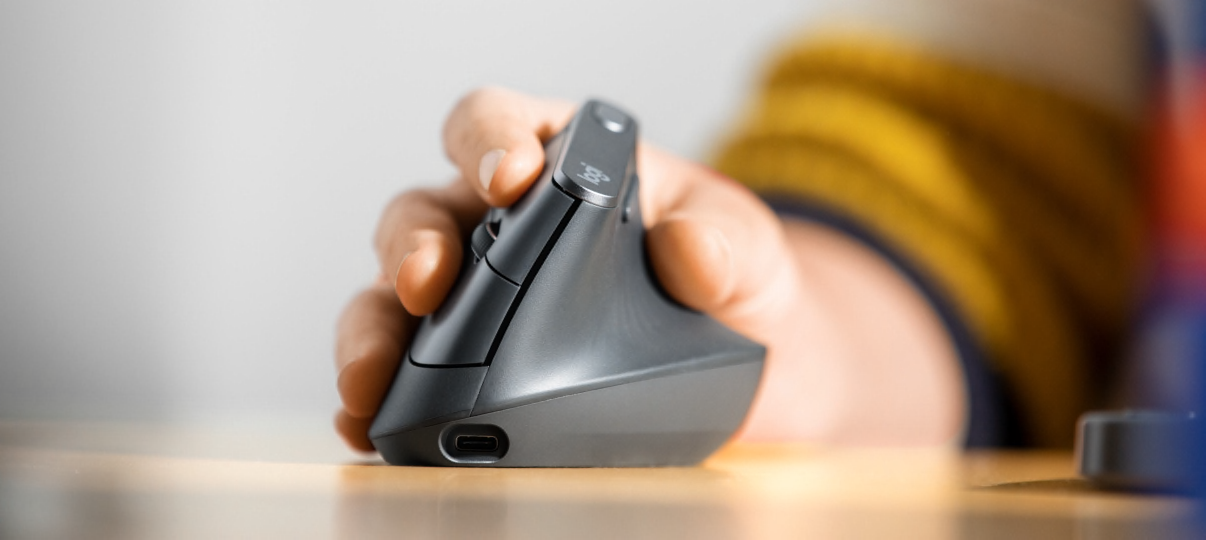Ergonomic Mouse: Redefining Comfort in the Digital Age

Introduction
Ergonomic Mouse in today’s digital-first world, the mouse has become one of the most used tools in our daily routine. Whether it’s typing reports, browsing the web, editing videos, or gaming, we spend countless hours gripping and clicking a mouse. Yet, very few people pay attention to the design of the mouse they use. That’s where the ergonomic mouse comes into play.
Unlike traditional mice, ergonomic mice are specifically designed to fit the natural shape of your hand and reduce strain on your wrist, forearm, and fingers. Over the years, as awareness of workplace health has grown, ergonomic mice have become more than just a luxury—they are a necessity for professionals, gamers, and even casual users.
In this article, we’ll dive deep into what makes an ergonomic mouse unique, its benefits, the types available, and how to choose the right one. By the end, you’ll understand why upgrading to an ergonomic mouse could be one of the smartest decisions for your health and productivity.
What is an Ergonomic Mouse?

An ergonomic mouse is a computer mouse designed to support your hand in a more natural position. Instead of forcing your wrist to twist unnaturally like standard mice, ergonomic models align with the natural angles of your hand, arm, and shoulder. The goal is to minimize muscle strain, improve comfort, and prevent long-term health issues like carpal tunnel syndrome or repetitive strain injuries (RSI).
These mice are often larger and differently shaped than traditional models. Some come in vertical designs, while others look more like trackballs or sculpted shapes tailored for hand comfort. Despite the unusual designs, once users adapt, they often find ergonomic mice far more comfortable for extended use.
Ergonomic mice also vary in size, grip style, and orientation (left-handed or right-handed), ensuring that every user can find one that suits their needs. It’s not a one-size-fits-all solution; it’s a tool built with human anatomy in mind.
Why Ergonomics Matter in Everyday Computing
1. Health and Well-Being
The most important reason to switch to an ergonomic mouse is health. Poor posture and repetitive wrist movements can lead to discomfort, pain, or even long-term injuries. An ergonomic mouse reduces unnatural hand twisting, keeping your wrist in a neutral position. This can significantly lower the risk of musculoskeletal disorders.
2. Productivity and Efficiency
Comfort directly impacts productivity. If you’re not distracted by pain or discomfort, you can focus on your tasks longer and with greater efficiency. Many professionals who switch to ergonomic mice report less fatigue during long workdays, which translates into better performance.
3. Long-Term Cost Savings
While ergonomic mice are often more expensive upfront, they can save money in the long run. Medical treatments for wrist pain or RSI can be costly, not to mention the potential downtime. Investing in an ergonomic mouse is essentially investing in preventive healthcare.
Types of Ergonomic Mice
1. Vertical Mouse
A vertical mouse positions your hand in a handshake-like grip. This design reduces wrist pronation and keeps the arm in a natural posture. It may feel strange at first, but once you get used to it, the comfort is undeniable. Vertical mice are especially popular among users dealing with wrist pain.
2. Trackball Mouse
With a trackball mouse, you don’t move the mouse itself. Instead, you use your thumb or fingers to roll the trackball, which controls the cursor. This design minimizes wrist movement entirely, making it a great choice for people with limited mobility or RSI.
3. Contoured or Sculpted Mouse
These mice look similar to traditional ones but are designed with curves that support the hand better. They allow a more natural resting position, reducing strain on the fingers and wrist. Sculpted ergonomic mice are a good middle ground for those who want comfort without drastically changing the feel of their mouse.
Who Should Use an Ergonomic Mouse?
1. Office Workers
If you spend eight or more hours in front of a computer, a traditional mouse can cause subtle but harmful strain over time. An ergonomic mouse is ideal for office workers who need to maintain comfort during long workdays.
2. Gamers
Gamers spend hours holding and clicking their mouse, often requiring fast precision movements. An ergonomic gaming mouse combines performance with comfort, ensuring long sessions don’t lead to hand fatigue. Many gaming brands now include ergonomic models with customizable buttons and DPI settings.
3. Creative Professionals
Designers, video editors, and programmers rely on precision and comfort. An ergonomic mouse allows smoother control while minimizing stress on the wrist. Trackball and sculpted designs are especially popular in creative industries where prolonged use is unavoidable.
4. People with Pain or Injuries
If you’ve already experienced wrist pain, carpal tunnel syndrome, or RSI, switching to an ergonomic mouse can make a noticeable difference. It won’t cure medical conditions, but it can relieve strain and make daily computer use far less painful.
Advantages of Using an Ergonomic Mouse
1. Reduced Strain and Pain
The biggest benefit is comfort. By keeping your hand in a natural position, ergonomic mice significantly reduce muscle strain. This makes them perfect for people prone to wrist or forearm pain.
2. Better Hand Position
Traditional mice often force your hand into a flat, twisted position. Ergonomic models encourage a neutral posture that mimics how your hand naturally rests. This small change can have a huge impact on your comfort.
3. Customizable Features
Many ergonomic mice come with customizable buttons, sensitivity adjustments, and programmable shortcuts. These features not only improve usability but also reduce repetitive movements that contribute to strain.
Common Concerns About Ergonomic Mice
1. Learning Curve
Because ergonomic mice often look and feel different, they can take some time to get used to. For example, vertical and trackball designs require a short adjustment period. However, once users adapt, the benefits far outweigh the initial awkwardness.
2. Cost
Ergonomic mice are usually more expensive than standard ones. While this may discourage some buyers, it’s important to view them as an investment in health and productivity.
3. Limited Portability
Some ergonomic mice are bulkier than traditional models, making them less convenient for travel. However, compact ergonomic options are available for users on the go.
How to Choose the Right Ergonomic Mouse
1. Grip Style
Do you prefer palm grip, claw grip, or fingertip grip? The answer will help determine which ergonomic design suits you best. Palm grip users often prefer sculpted mice, while claw and fingertip users may lean toward vertical designs.
2. Hand Size and Orientation
Ergonomic mice come in different sizes, so it’s important to choose one that fits your hand comfortably. Additionally, left-handed users should look for models specifically designed for them, as most mice are right-hand oriented.
3. Features and Functionality
Consider what features you need. If you’re a gamer, look for high DPI and programmable buttons. For office work, silent clicks and wireless connectivity may be more important.
4. Budget
Ergonomic mice can range from affordable entry-level options to high-end models with advanced features. Decide what you’re willing to spend, but remember that comfort and health should take priority.
Popular Ergonomic Mouse Brands in 2025
- Logitech – Known for versatile designs like the MX Vertical and MX Ergo trackball.
- Anker – Affordable and reliable vertical mice suitable for office use.
- Kensington – Specializes in ergonomic trackball mice.
- Razer & Corsair – Produce ergonomic gaming mice with customizable features.
- Microsoft – Offers ergonomic designs for everyday professionals.
Final Thoughts
The ergonomic mouse is more than just a stylish accessory—it’s a health-conscious upgrade for anyone who spends significant time on a computer. By aligning with the natural posture of your hand, it reduces pain, prevents injuries, and enhances overall productivity.
While there may be a learning curve and a higher price tag compared to traditional mice, the long-term benefits are undeniable. Whether you’re an office professional, a gamer, or someone already struggling with wrist pain, an ergonomic mouse can transform the way you work and play.
If you’ve been ignoring that slight discomfort in your wrist during long hours at the computer, now is the time to take it seriously. Investing in an ergonomic mouse isn’t just about comfort—it’s about protecting your health and ensuring your digital lifestyle remains sustainable.



